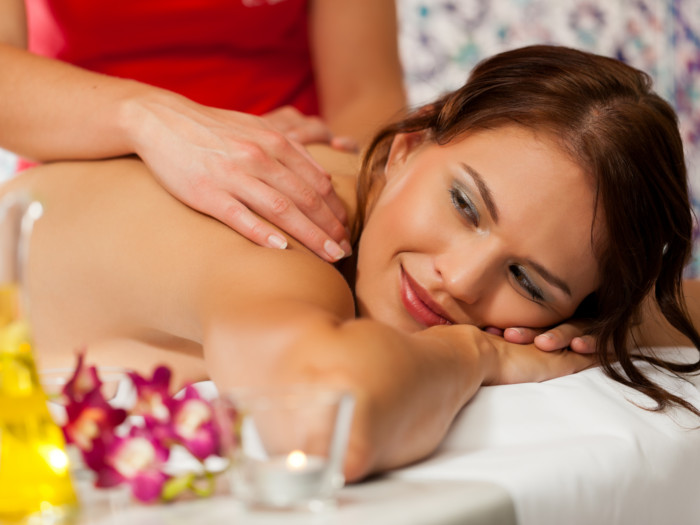For most people, an oil massage is a rare and special treat. Our bodies can benefit greatly from this type of massage, however, and you can even learn how to do it at home!
History of Oil Massage
Massage treatment dates back at least 3,000 years and early documentation shows that techniques were initially developed in China, Egypt, and India. Oil massage is a key component of Ayurvedic medicine, the Indian holistic practice dating back to 1500 BCE. In the 1800s, a Swedish doctor began using the techniques more widely, and in the past 50 years, it has become surprisingly popular in the US and other parts of the world. [1]

Body Massage after a hectic day can realx your brain and activates your body cells. Photo Credit: Shutterstock
Health Benefits of Oil Massage
Oil massage has countless benefits for the mind, body, and spirit.
- Support the musculoskeletal and nervous system to prevent injuries [2]
- According to a research study published in Indian J Med, oil massage is able to promote good circulation [3]
- Contribute to the proper sleep cycle
- Relieve strained muscles
- Relieve joint pain
- Improve alignment and posture
- Based on the findings of a study by Dr. Susie Wilkinson, University of Liverpool and published in the International Journal of Palliative Nursing, massage can help to reduce stress and anxiety [4]
- Prevent perineal damage during childbirth [5]
- Promote deep breathing and relaxation
- Contribute to feelings of care and closeness
- The oil from the massage nourishes and improves the health of your skin
Type of Oil to Use for Massage
Use natural products like coconut oil, jojoba oil, sesame oil or almond oil. Things like avocado oil, olive oil, or shea butter can be used, but they may be too thick or greasy and should instead be combined with lighter oils. You can also add a few drops of essential oil, such as lavender or rose. Always take allergies into account; for instance, people with a latex allergy may have negative reactions to avocado oil.
How to Perform Oil Massage
All bodies of all ages can benefit from oil massage, ranging from babies to the elderly. You can massage yourself, a partner or a family member. [6]
Techniques from the Ayurvedic tradition are the best for at-home massage. [7]
- Using oil to anoint the body and slow gentle motions to release tension in the muscles is a technique that anyone can perform.
- While standing, laying or sitting on a towel that you don’t mind ruining with oils, use gentle pressure to massage warm oil into the feet, legs, abdomen, arms, neck, and even scalp.
- Use this time to breathe deeply and clear your mind, while allowing positive thoughts about your body and its shape and abilities to anchor you.
Caution: People with blood disorders or injuries to the joints, bones or muscles should avoid deep tissue massage. Abrasions or blemishes to the skin can become irritated during the massage. Bruising can occur when the massage is not performed cautiously. Stop massage immediately if you feel any pain beyond the normal release of tension.
